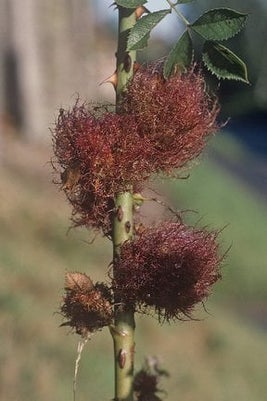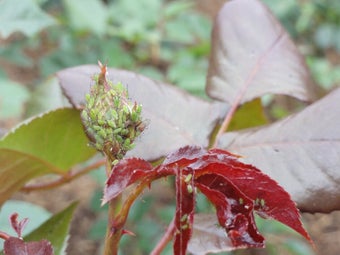
Quick facts
Common names - Robin's pin cushion or Rose bedeguar gall
Scientific name - Diplolepis rosae
Plants affected - Roses
Timing - Summer
What is Robin's pin cushion?
Robin's pin cushion, also known as rose bedeguar gall, is an harmless growth caused by a species of gall wasp (Diplolepis rosae) it is part of the roses support. The adult wasp lays eggs in the or developing leaves during mid-summer period. The eggs hatch into small white larvae that secrete chemicals that cause the abnormal growth.
Instead of buds developing into normal shoots and leaves, they are converted into hard woody structures that have an outer covering of moss-like leaves, which are either reddish pink or yellowish green. The internal part of the gall contains a number of chambers in which the grubs develop. The galls are fully developed during August and the insects overwinter inside the galls as pupae. During the autumn the outer covering of moss-like leaves tends to decay and this leaves the hard woody centre exposed.
This insect is more frequently found on wild roses or growth but it does also occur on some of the rose species grown in gardens. The feeding activities of the gall wasp grubs do not have any real adverse effect on the rose, apart from creating the galls.
There are more than 900 plant gall forming animals in the UK, including mites, beetles, flies, gall wasps, plant sucking bugs (psyllids), aphids and sawflies.
The encourages and co-ordinates the study of plant galls in the British Isles.

Management
The galls are not harmful to the rose and part of the roses support so no action should be taken.














